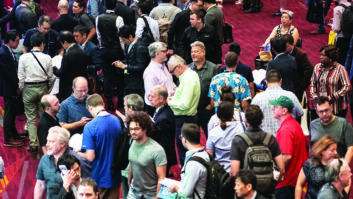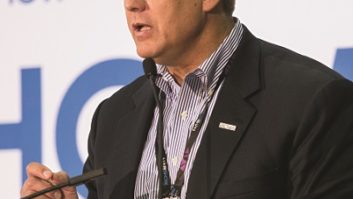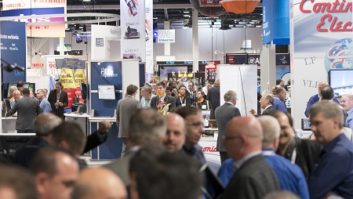Consumers have put a renewed focus on audio, pushing radio broadcasters to adapt in those quickly evolving entertainment spaces. That’s especially true in the connected car, where automakers are cooking up infotainment systems that know no bounds — in-car karaoke, anyone? Consumer adoption of new tech is in the fast lane.
The annual electronics pilgrimage to CES in January brought 115,000 visitors with innovations in smart driving technology and mobility — like eyes-free driving and virtual assistants — along with seemingly endless entertainment options.
Jacobs Media President Fred Jacobs attended and ushered radio industry executives on floor tours that explored technology realms never seen before by people. And that’s not an exaggeration.
Radio World spoke to Jacobs about how screenification of the car, AI, synthetic voice and the metaverse are reshaping the radio listening experience.
Radio World: What are the things radio broadcasters need to be focused on right now in a world of increased audio consumption?
Fred Jacobs: As far as consumer electronics, we see home smart speaker use has slowed a bit, which is bad news for radio broadcasters, since listening to radio is one of the top uses for home smart speakers. Radio has done a good job promoting that, but the place where everything is moving quickly is the connected car and voice assistants.
RW: It’s all about the car isn’t it.
Jacobs: It always has been for radio. It continues to be the number one listening location. The entire West Hall at LVCC during CES was focused on automotive. The screenification of the car is ongoing. Screens are getting bigger and multiplying. The screens are being engineered on artificial intelligence. So the car can learn preferences and habits and customize the experience for the driver. Voice solutions like Alexa Auto are really coming along. Making it a hands-free environment.
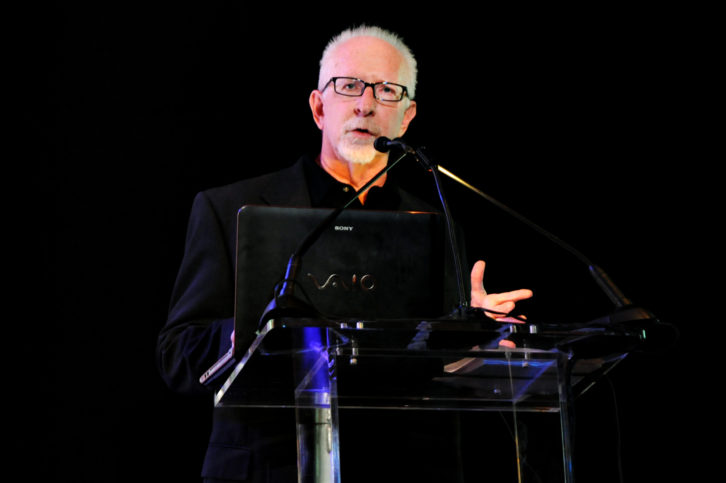
RW: Seems like everyone is talking about the metaverse. Are you buying the hype?
Jacobs: It seems to me Web3 and the metaverse is proving very controversial. A lot of people are still skeptical about it. Microsoft is very involved in the space through Touchcast. It was a popular stop on our tours at CES. They had an elaborate display of a car dealership in the metaverse. We got to watch a demo of a car shopping experience, without the goggles mind you, which was very appealing.
The use of AI and virtual reality from the standpoint of avatars and creating virtual personalities is intriguing. You could see how this might apply to broadcasters and having personalities on hand for an event of some sort. How about a virtual Elvis Duran greeting listeners at a station event? That’s really exciting. And that technology is here already. There were a number of applications of it at CES.
[Related: “Inside iHeartMedia’s Expansion Into the Metaverse“]
RW: What were your other takeaways from CES 2023?
Jacobs: The more you go to these shows, you realize it’s not just about the latest gadgets and toys, but rather themes. When you focus on overall themes you get a better picture of what is happening. Even the bigger exhibits like Samsung, LG, Sony and Panasonic, they were more focused on user experiences.
Some of this is COVID-related. There were lots of innovations that were designed to make people feel more relaxed and less stressed.
That can also be tied to the car, where facial cameras can now read a driver’s face and decide whether they are stressed or not, and the mobility and infotainment system can recommend a playlist of pre-selected songs the driver likes or map a more scenic drive home. Artificial intelligence is now in the bloodstream of so many technologies. To be able to predict behavior or to mimic a style of how someone speaks or acts.
RW: What can radio do to adapt to the user experience in the new in-car world?
Jacobs: Unfortunately, too many radio broadcast companies don’t think that way. They think about content and monetizing it, but too often the consumer is secondary in scope. So the overriding impression you get from CES is that the customer’s user experience has to be first.
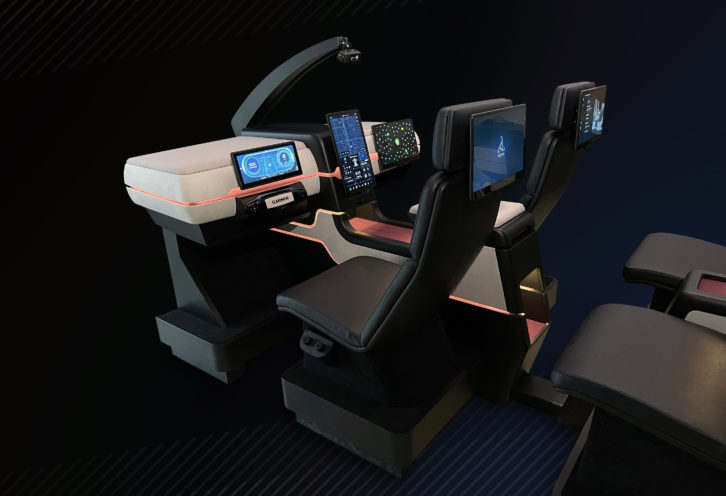
RW: You blogged about Xperi having a large presence at CES.
Jacobs: Yes, and they did a great job of showing what radio can look like in the car. Their exhibit has grown, and DTS AutoStage, which was also on display down the hall at the Mercedes booth, really does a good job showing how cool radio can look on these screens in the car that get bigger and bigger. Radio has never looked better in the car.
And why shouldn’t radio look good in the car? That makes the metadata stations are pushing out more important than ever. And the importance of having a station app has never been greater. The first thing folks do when they get in a car is pair the phone with the system, whether it be Apple CarPlay or Alexa Auto or Android Automotive. Everything is app-driven now. They are an important conduit to in-vehicle listening. Having a good app, whether it’s your own or an aggregated one, is critical.
RW: What about the fate of AM radio in electric vehicles, did you find out anything new at CES?
Jacobs: I didn’t hear much. It’s funny, when you ask the auto folks at the show about AM radio they politely defer. They only want to point out the features they want to point out.
I’m not up to date on Sen. Markey’s efforts to get a commitment from the auto manufacturers to keep AM radio in the new electric vehicles. Here’s the thing. From a technical standpoint it can be done. There are electric vehicles out there with AM radio and they sound fine. So it’s not a technical issue but more of a willingness issue on behalf of the car makers.
But here is what I know. An electric car isn’t just for driving. When you think about the charging of these vehicles, it’s not going to be a quick five-minute stop for gas. It’s more like a 30-minute rest stop at a charging station. What are you going to do during that time? Work on your laptop maybe, play with your phone, and be looking for entertainment options in the car.
[Related: “Letter: My Electric Vehicle Picks Up AM Just Fine“]
RW: Any “oh wow” moments for the radio executives on your tours?
Jacobs: I think there is a realization of how much screen surface there is in these new vehicles. And why audio alone isn’t enough any longer.
And the realization that radio now shares the car acreage with a lot of content creation services. From satellite radio, streaming music platforms, personal music collections and podcasts. And gaming and videos for passengers. It really puts it in context when you see the content players radio is now competing against. The car is a now a case study of what is a new entertainment venue on wheels.
RW: You blogged about automakers one day moving to a new business model in which radio service in a car could become part of an “a la carte” option menu and require owners to pay a monthly fee to receive. You know you are striking fear into the hearts of radio broadcasters everywhere.
Jacobs: Well, it’s real, and Tesla is already doing it. The OEMs have always only made money on the sale of the vehicle. Once the car was sold that was it. Now automakers are rolling out these microtransations with a new line of thinking by being able to add features as a service. And these are facilitated by the ability to do computer updates in the connected car.
Steve Koenig with the Consumer Technology Association started this dustup, and I wrote about it. He stated that it’s the direction we are moving in. The idea is to have car buyers choose options, including radio, and then pay the car company a monthly fee for the service. I think BMW in some countries is charging something like $18 a month for heated seats, for goodness.
And Tesla is already doing it for infotainment features. And if this works you can bet others will follow. On one hand it is part of the customization of the vehicle, but unfortunately if AM and FM radio becomes a part of the options menu it might not be good news. There will be some consumers who do not check off the radio box.
[Ed. note: A new study from BIS Research shows global in-vehicle payments are expected to reach nearly $26 billion by 2031, according to Jacobs.]
RW: A year ago you worried out loud that U.S. radio broadcasters were sitting out this audio renaissance by not adapting quick enough. Has anything changed your mind since?
Jacobs: Well, good question. I actually think some progress has been made. This isn’t necessarily research-driven but more observational. I think more broadcast companies get it now. Compared to a few years ago they are more proactive and they are participating. And developing long-range digital strategies.
I think small broadcast stations are still making some decisions about how deep they want to go in particular areas, but more are at least having these conversations about developing a strategic plan.
RW: Any final thoughts? We haven’t discussed synthetic voice applications.
Jacobs: Here is where it gets is exciting for radio. This is a great example of AI that is already being applied by iHeart and others looking to utilize their personalities beyond just regular voice-tracking. Voice replication technology has come so far in the last three or four years. It will only get better over time. I would expect the adoption rate to accelerate.
And there are AI writing tools for radio. ChatGPT can spit out commercial copy for you, or a blog or an article for your website. It could save content creators a lot of time by at least initially creating a first draft for a script or a blog that then just needs finalizing by a real person. Seth Resler blogged about it for Jacobs Media. The technology is really quite amazing.








